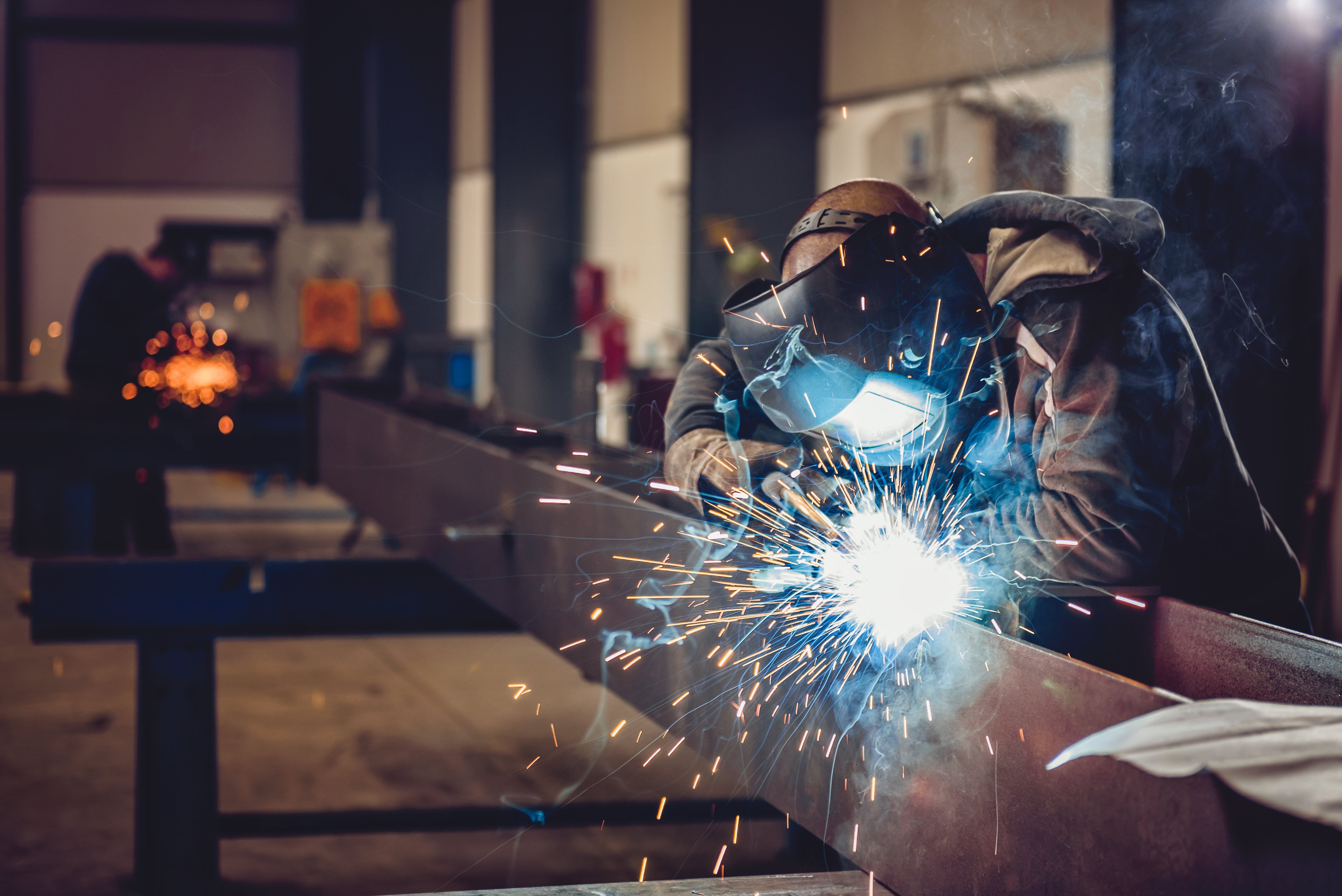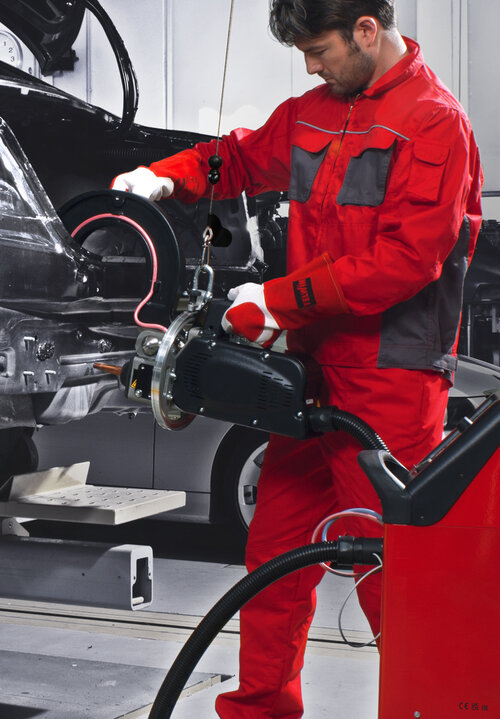All Concerning Welding: Key Insights Into Techniques and Best Practices for Success
Welding includes a selection of methods, each matched for certain products and applications. Recognizing these approaches, such as GMAW, SMAW, and TIG, is crucial for attaining ideal results. The best devices and safety practices can not be overlooked. As prep work and troubleshooting play essential roles in the welding procedure, mastering these elements can significantly boost the top quality of the end product. What are the crucial aspects that guarantee an effective weld?
Understanding Various Welding Strategies
Welding techniques include a range of methods, each suited to certain applications and materials. Amongst the most typical techniques are Gas Steel Arc Welding (GMAW), Protected Metal Arc Welding (SMAW), and Tungsten Inert Gas Welding (TIG) GMAW, likewise called MIG welding, is prominent for its speed and adaptability, making it suitable for slim products. SMAW, or stick welding, is favored for its simplicity and effectiveness in outside atmospheres, particularly with thicker steels. TIG welding provides precision and control, making it appropriate for intricate work and non-ferrous metals (Fabrication). Each method has its unique benefits and considerations, allowing welders to select the ideal method based on the task's requirements, material kind, and wanted results. Recognizing these methods is vital for successful welding
Important Welding Tools and Devices
While numerous welding strategies need specific skills, the appropriate tools and tools are similarly crucial for accomplishing quality results. Essential welding equipment consists of welding machines, which differ relying on the method-- such as MIG, TIG, or stick welding. Safety equipment, including headgears, aprons, and handwear covers, assurances safety and comfort during the process. On top of that, clamps and fixtures help safeguard materials in position, guaranteeing accuracy in welds. Consumables like welding rods, cord, and protecting gas are also critical elements that influence the top quality of the weld. Tools such as grinders and cutters help with surface preparation and post-weld finishing, adding to a specialist result. Buying premium devices ultimately enhances the efficiency and performance of welding projects.
Security Practices in Welding
Correct safety and security methods are essential in the welding industry to safeguard workers from prospective threats. Welders need to use suitable personal protective tools (PPE), consisting of helmets with correct shading, gloves, and flame-resistant garments. Appropriate ventilation is important to reduce exposure to harmful fumes and gases created during the welding procedure. Additionally, workers should be learnt the appropriate handling of welding tools to avoid crashes. Fire safety actions, such as keeping combustible materials away from the welding area and having fire extinguishers conveniently available, are needed. Routine inspections of equipment and workspaces can aid determine possible dangers before they lead to crashes. By adhering to these safety and security methods, welders can create a more secure working setting and decrease threats related to their trade.
Readying Products for Welding
Preparing materials for welding is a vital step that significantly influences the quality and stability of the final product (Belgrade). Proper preparation involves cleansing the surface areas to eliminate impurities such as rust, dust, and oil, which can endanger the weld. Strategies such as grinding, sanding, or utilizing solvents are commonly utilized to attain a tidy surface. Additionally, making sure that the materials fit with each other well is important; voids can result in weak welds. It's additionally important to think about the alignment and positioning of the elements, as this will impact the ease of welding and the last outcome. Selecting the appropriate filler product and ensuring compatibility with the base metals is vital for achieving strong, long lasting welds.
Tips for Getting High-Quality Welds
Attaining high-quality welds calls for attention to information and adherence to best methods throughout the welding process. Correct joint prep work is vital, ensuring surface areas are tidy and cost-free from contaminants. Selecting the ideal filler material and welding method based upon the base metals is important for excellent bonding. Preserving constant traveling speed and angle while welding can protect against issues and promote harmony. In addition, controlling warmth input is important; extreme warm can result in warping and damaged joints. On a regular basis inspecting the welds during the process permits instant changes if necessary. Finally, employing appropriate post-weld therapies, such as cleansing and stress alleviation, can enhance the longevity and honesty of the weld, inevitably ensuring an effective result.
Troubleshooting Usual Welding Issues
Welding typically presents challenges that can influence the top quality and honesty of the final product. Usual issues such as porosity, irregular weld grains, and getting too hot can develop, each needing specific repairing methods. Comprehending these troubles is essential for welders to improve their abilities and attain excellent outcomes.
Porosity Problems Clarified
Although porosity can usually be ignored, it remains a crucial problem in welding that can compromise the stability of an ended up product. Porosity describes the existence of little gas pockets Get the facts within the weld bead, which can lead and damage the joint to premature failure. This issue typically arises from contaminants, wetness, or improper securing gas insurance coverage during the welding try this out process. To alleviate porosity, welders ought to validate that the base materials are dry and clean, use proper protecting gases, and keep constant welding parameters. On a regular basis examining the devices and setting can also assist recognize possible problems prior to they manifest in the weld. Resolving porosity successfully is essential for accomplishing solid, durable welds that fulfill quality criteria.

Irregular Weld Beans
Inconsistent weld grains can greatly influence the top quality and strength of a completed product. Different variables contribute to this concern, consisting of incorrect traveling rate, inaccurate amperage setups, and inconsistent electrode angles. When the welder moves also rapidly, a grain might appear slim and do not have penetration, while relocating also gradually can create too much accumulation. Additionally, utilizing the incorrect amperage can result in either undercutting or too much spatter, both of which compromise weld integrity. The welder's method, such as irregular torch motion, can likewise result in uneven bead appearance. To minimize these troubles, welders should concentrate on preserving consistent, regulated activities and making certain correct tools settings to accomplish uniformity in their welds. Consistency is vital to achieving solid and trusted welds.
Getting Too Hot and Warping Issues
Excessive heat during the welding procedure can bring about considerable getting too hot and buckling concerns, impacting the structural stability of the workpiece. These problems typically materialize as distortion, which can endanger alignment and fit-up, making further setting up testing. Factors contributing to overheating consist of the choice of welding parameters, such as voltage and travel rate, as well as the type of product being bonded. To minimize these problems, welders need to preserve constant travel speed and proper heat input while keeping an eye on the workpiece temperature level. In addition, pre-heating or post-weld heat therapy can page help reduce stresses brought on by quick air conditioning - Fabrication. Routine examination and adherence to finest techniques are important in avoiding getting too hot and making certain the long life and reliability of bonded frameworks
Often Asked Inquiries
What Are the Job Opportunities in the Welding Sector?
The welding industry provides varied job possibilities, consisting of placements as welders, engineers, assessors, and educators. Professionals can work in manufacturing, construction, aerospace, and automobile industries, taking advantage of strong need and affordable wages in numerous duties.
How Can I Boost My Welding Speed Without Giving Up Quality?
To enhance welding speed without compromising high quality, one need to exercise efficient methods, keep equipment, maximize settings, and boost hand-eye control. Normal training and looking for responses can additionally greatly add to accomplishing much faster, high-quality welds.
What Qualifications Are Offered for Welders?
Various accreditations exist for welders, including those from the American Welding Culture (AWS), the National Facility for Construction Education And Learning and Research (NCCER), and numerous industry-specific companies. These credentials enhance employability and show ability proficiency.
Just How Does Welding Impact the Properties of Metals?
Welding affects the homes of metals by altering their microstructure, which can cause modifications in strength, firmness, and ductility. Warmth input and air conditioning prices throughout the process substantially impact these product features.
Can I Weld Dissimilar Metals With Each Other?
